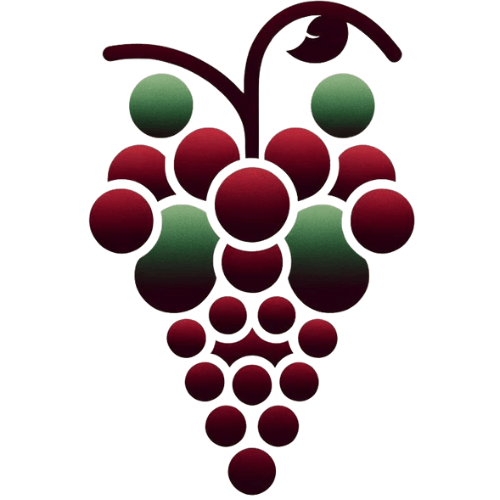Welcome to a journey through time, as we trace the fascinating history of Sangiovese wine. This blog post will take you on a voyage from the vineyards of ancient Italy to the modern-day wine cellars of connoisseurs worldwide. We will explore the origins, evolution, and enduring popularity of this beloved wine. So, pour yourself a glass of Sangiovese, sit back, and let's embark on this captivating journey together.
Origins of Sangiovese: A Wine from Antiquity
Sangiovese, a red Italian wine grape variety, has a history as rich and complex as its flavor profile. The name Sangiovese derives from the Latin "Sanguis Jovis," meaning "the blood of Jove," a nod to the ancient Romans who may have been the first to cultivate this grape.
In the early days, Sangiovese was not the wine we know today. It was a wild vine, growing in the forests of Tuscany. The Etruscans, an ancient civilization predating the Romans, were likely the first to domesticate the Sangiovese grape. They recognized the potential of this wild vine and began cultivating it in their vineyards.
The Romans continued this tradition, refining the cultivation and vinification processes. They revered wine as a symbol of civilization and prosperity, and Sangiovese played a significant role in their viticulture.
Evolution of Sangiovese: The Middle Ages and Renaissance
As we move into the Middle Ages, Sangiovese's story becomes intertwined with the monastic orders. Monks, with their meticulous record-keeping, played a crucial role in the evolution of Sangiovese. They experimented with different cultivation techniques, leading to the development of distinct Sangiovese clones.
During the Renaissance, Sangiovese began to gain recognition outside of Italy. Italian nobility, including the Medici family, championed Sangiovese. They exported it to other European courts, spreading its reputation far and wide.
Yet, Sangiovese was not always the star of the show. In fact, for many centuries, it was blended with other grapes. It was not until the 19th century that Sangiovese began to stand alone, thanks to the efforts of Baron Bettino Ricasoli.
Sangiovese in the Modern Era: Recognition and Global Spread
Baron Bettino Ricasoli, an Italian statesman and wine producer, is often credited with creating the original formula for Chianti wine, a blend dominated by Sangiovese. His work in the mid-19th century marked a turning point for Sangiovese, elevating it from a blending grape to a variety worthy of recognition in its own right.
In the 20th century, Sangiovese faced new challenges and opportunities. Two World Wars and the subsequent economic turmoil hit Italy's wine industry hard. However, the adversity also sparked innovation. Producers began to focus on quality over quantity, leading to the birth of the "Super Tuscan" wines, which often featured Sangiovese.
Today, Sangiovese is one of the most planted grape varieties in Italy. It's the backbone of many prestigious Italian wines, including Chianti, Brunello di Montalcino, and Vino Nobile di Montepulciano. Moreover, Sangiovese has spread beyond Italy's borders, finding new homes in places like California, Australia, and Argentina.
Sangiovese Today: Varieties and Wine Styles
Sangiovese is a versatile grape, capable of producing a wide range of wine styles. From light and fruity to dark and complex, there's a Sangiovese wine for every palate.
The Sangiovese Grosso clone, used in Brunello di Montalcino, produces wines with a deep color, high tannin levels, and robust flavors. On the other hand, the Sangiovese Piccolo clone, used in many Chianti wines, tends to produce lighter, more acidic wines.
Sangiovese's versatility also extends to its blending potential. While it can shine on its own, it also plays well with other grapes. In Chianti, it's often blended with grapes like Canaiolo and Colorino, and in Super Tuscan wines, it's frequently paired with international varieties like Cabernet Sauvignon and Merlot.
The Future of Sangiovese: Challenges and Opportunities
As we look to the future, Sangiovese faces both challenges and opportunities. Climate change poses a significant threat to all wine grapes, and Sangiovese is no exception. Warmer temperatures can lead to overripe grapes, which can result in wines lacking Sangiovese's characteristic acidity and freshness.
However, there are also opportunities for innovation and growth. Advances in viticulture and winemaking techniques can help mitigate the impacts of climate change. Moreover, the global popularity of Italian cuisine and the growing trend towards wines with a sense of place bode well for Sangiovese's future.
Appreciating Sangiovese: A Guide for Wine Lovers
For wine lovers, Sangiovese offers a world of flavors to explore. Its high acidity and medium to high tannin levels make it a perfect partner for a wide range of foods, particularly Italian dishes like pasta with tomato-based sauces and grilled meats.
When tasting Sangiovese, look for flavors of red cherries, fresh tomatoes, and herbs, often accompanied by earthy notes of tobacco and leather. As Sangiovese ages, it can develop more complex flavors, including dried fruits, spices, and balsamic notes.
Remember, the best way to appreciate Sangiovese is to experience it for yourself. So, why not open a bottle and raise a toast to the rich history of this remarkable grape?
A Toast to Sangiovese: Celebrating Its Rich History
As we conclude our journey through the history of Sangiovese, we are reminded of the enduring allure of this grape. From its humble beginnings in the forests of Tuscany to its status as one of Italy's most celebrated wine grapes, Sangiovese has a story that is as captivating as the wines it produces. So, let's raise a glass to Sangiovese, a wine that truly stands the test of time.

